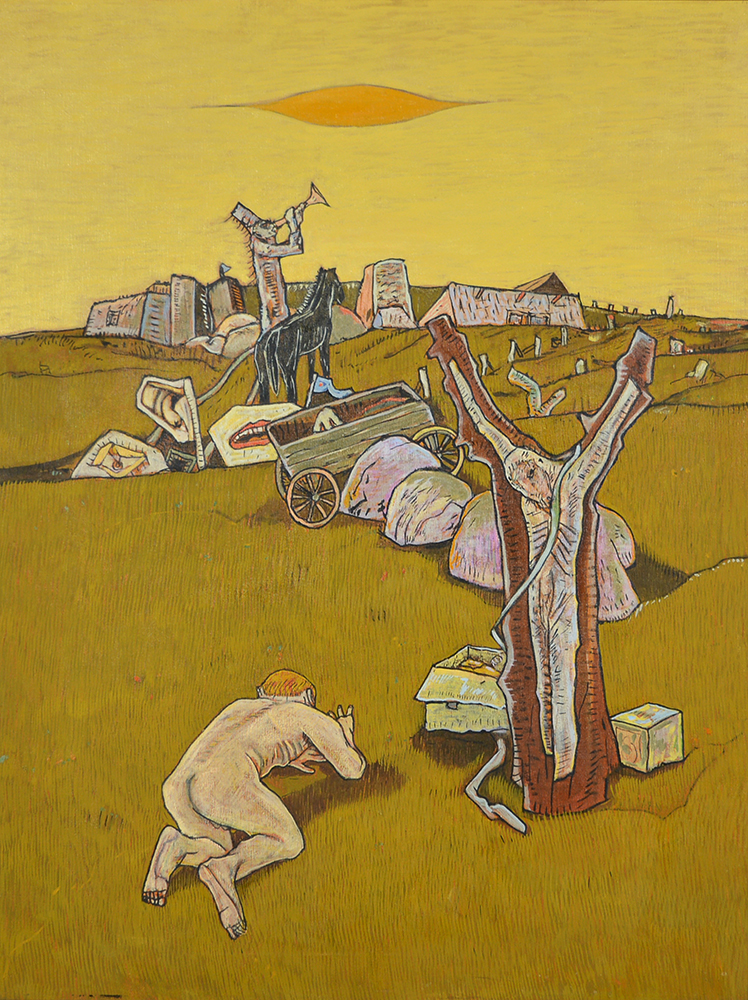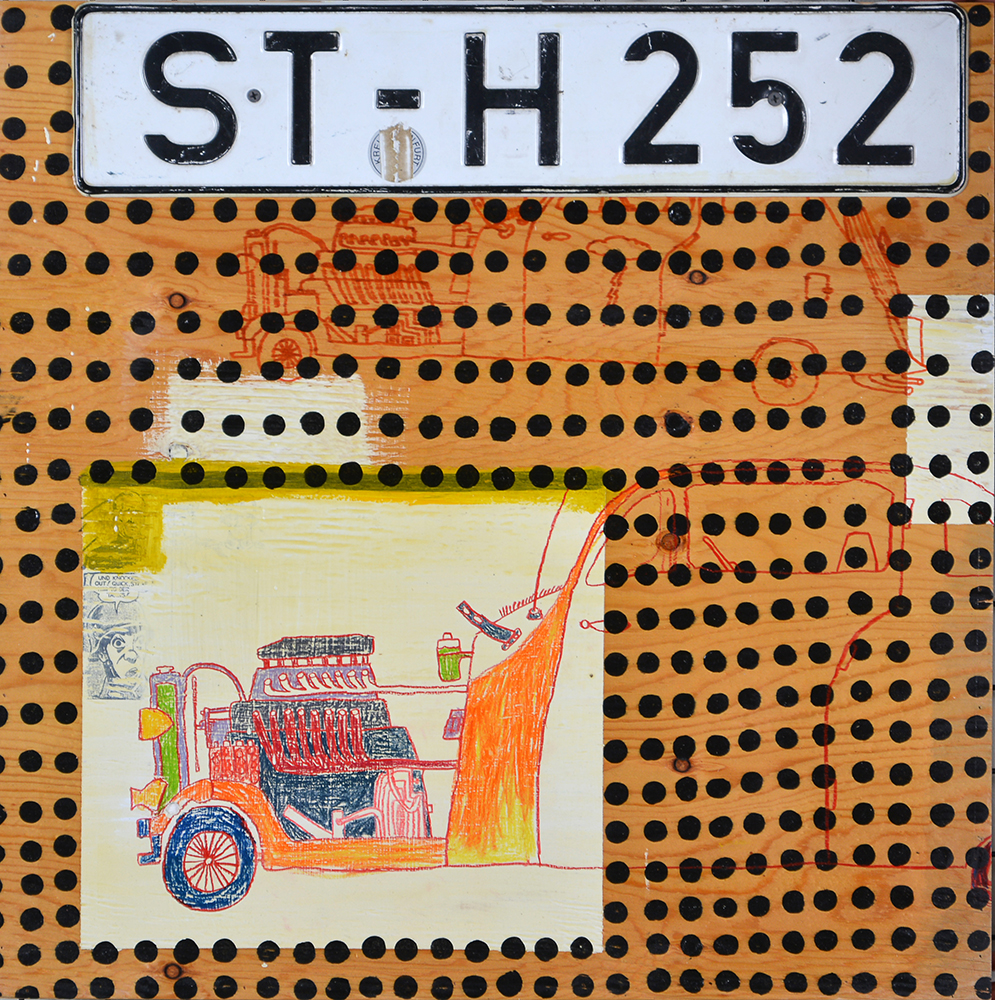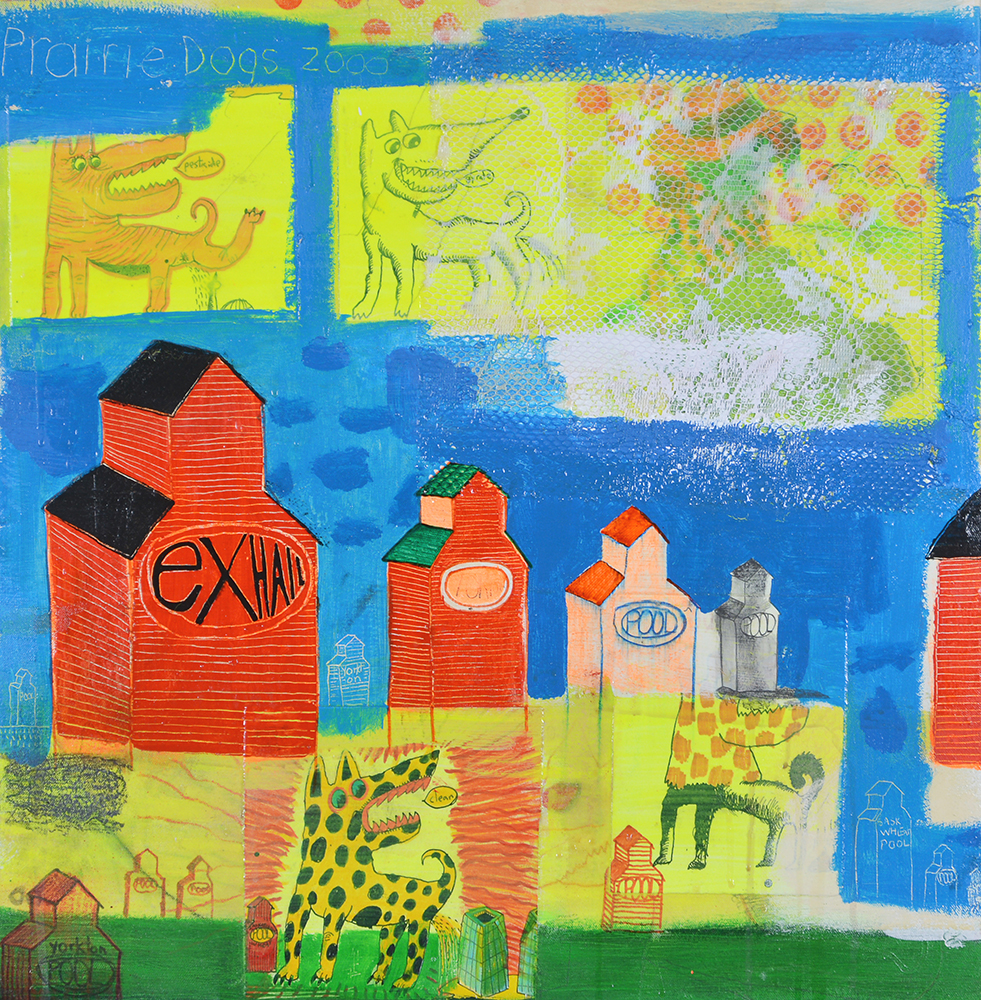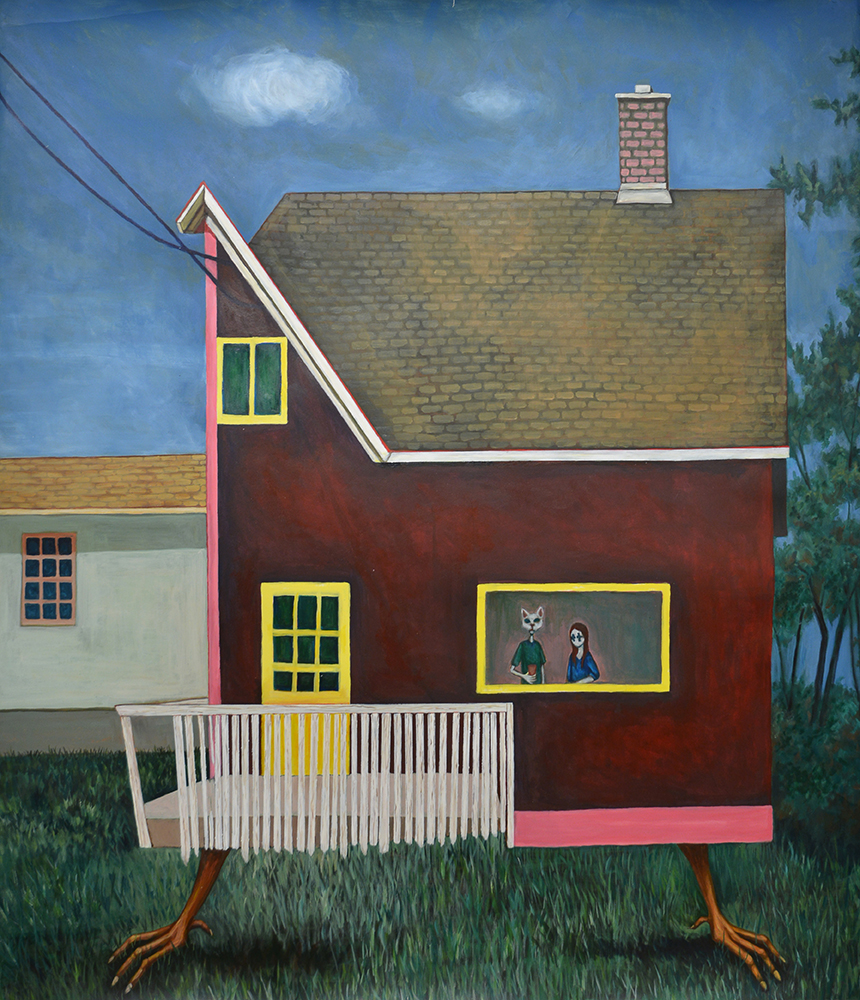Surrealism and Fantasy
Vernacular artists will often explore fantastical or surreal elements. The work might bring a dream-like quality to real-life subjects, implying spiritual underpinnings to physical reality. It may also venture further into the surreal, with its grounding in reality as more of a distant connection or reference.
Winnipeg artist Ivan Eyre’s work is like this – fully imagined, but with varying degrees of resemblance to familiar reality. Created in solitude where the mind could run wild. A sort of abstraction where familiar elements remain. Recognizable figures, structures, elements of landscape, but full of symbolism and metaphor. A visual experience that is open to interpretation.
Crucifixion contains some of his work’s recurring elements. Figures, oddly proportioned body parts, a distant figure with a horse, blowing a horn near some structures. Eyre refers to these detailed background elements in his work as “distant madnesses”. Thoughts that exist in the background but are always present.
Some of the more fantastical works can be marked by a freedom in approach. They may begin without a particular intention. They may find form through the artist’s subconscious choices and spontaneity in the act of making. Exploration of the materials themselves may also contribute to the artist’s choices and process.
Saskatchewan artist Jeff Nachtigall explored materials like this. Early on, he would dumpster dive for discarded material to make work. It generated ideas, but also reduced the sense of preciousness about his work. It was easier to abandon what was not working if the materials were already garbage.
Excerpts From Conversations With Myself is a series of 67 mixed-media panels created at a fast pace. Each panel reacts to news of the day. Looking from panel to panel is like flipping through television channels. Some explore pop culture, others protest confinement of the mind. Others work through adolescent power fantasy and aggression.
Some artists explore folklore in their work. They do this as a component of their own imagination, or to link viewers to particular narratives or moods in the work. They might depict traditional stories, characters, or other elements. Or they might make other references to guide interpretation.
Manitoba artist Chris Reid includes traditional folklore elements in her work. She uses folklore as a means to explore real-life issues. She refers to the Slavic folk tale of Baba Yaga, a witch famously known for her house that stands on chicken legs and wanders the forest. In daily life, Reid works with unhoused people, and so she explores the concept of housing in works like Baba Yaga Half Duplex. The work reflects anxiety and uncertainty by making reference to familiar stories with ominous undertones. It considers the scarcity and security of housing, and how one might protect that housing.
Whether to explore the workings of their own mind, or to process or relate an outside concept, artists will explore themes through a fantastical lens. They can depict distortions of reality, or things further removed, either to be relatable or to let the viewer see into their own inner world.
See Bibliography for sources.





